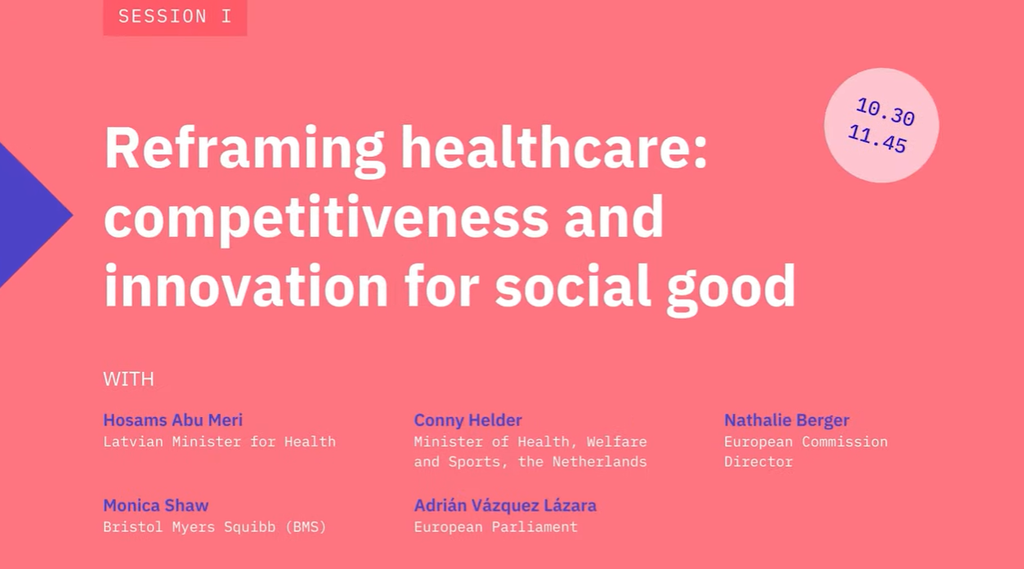Europe's moment: advancing clinical research and health innovation
Next event In person & online

- Area of Expertise
- Sustainable Livelihoods
Sustainable Livelihoods

Board member of the European Health Forum Gastein (EHFG)
The human brain is a remarkable supercomputer, capable of making decisions and arriving at conclusions from surprisingly sparse data. While this characteristic of the species provides an evolutionary advantage by greatly increasing individuals’ chances of survival, it is not very useful for scientific research, which has become the driver of modern medicine and the development of health systems all over the world.
The scientific approach to problem-solving requires impartial analysis, large enough datasets and unbiased observation to ensure that the results of research studies are accurate, reliable and applicable to the general population. But the generation and processing of large amounts of data have been very expensive, which has limited the extent to which decisions could be made based on evidence.
The unparalleled recent development of information and communication technology (ICT) has created the conditions to overcome this limitation by making both the generation and processing of scientifically valuable data inexpensive. ICT has infiltrated almost every area of daily life, generating oceans of readily accessible and analysable data. Ever-increasing processing power and faster connection speeds have made online analytical processing possible. It is not surprising that ICT development has quickly become one of the most fashionable topics of contemporary health policy discussions, which are now filled with buzzwords such as ‘big data’, ‘deep data’, ‘long data’, ‘eHealth’ and ‘mHealth’.
The human brain is a remarkable supercomputer, capable of making decisions and arriving at conclusions from surprisingly sparse data
Often the methodologies used do not reach further than traditional analytical tools and the new labels become inflated. There is no question that the impact of ICT in health service delivery can be paradigm-shifting, but it is important to remember that rapid technological development provides only the hardware for this change. The availability of exabytes of data, for instance, can just as equally paralyse decision-making as facilitate it. To improve health system performance, you need to know how to use the data.
Under the 2010-2014 government in Hungary, one of the new avenues of health sector governance was to improve evidence-based policy-making with the ‘big data’ capabilities of the Hungarian health system. An interesting feature of the single-payer Hungarian social health insurance system (which replaced the overcentralised ‘Semashko’ model of the communist regime) is that, since output-based payment methods were introduced countrywide in 1993, provider activity has been reported using patients’ social insurance identification number.
This means that Hungary has an extremely big database that spans more than two decades of specialist healthcare activity. This data can be analysed down to the level of individual patients. We intended to take full advantage of the opportunities presented by this ‘big’ and ‘long’ data from the very beginning to support our efforts to reform the Hungarian health system.
The potential of big data analysis in the healthcare sector depends on three critical factors: understanding complex systems, technologies and the context
A graphical representation of patient flow between Budapest hospitals helped us identify that patients were being transferred back and forth between two of the highest-level oncology care providers, Semmelweis University and the National Institute of Oncology, because neither had the capacity to provide the full spectrum of care needed to treat cancer patients.
Being aware of this fact meant that we could reorganise the patient pathways. It is important to understand that interpreting and acting on the findings offered by big data analysis requires a thorough knowledge of the actors, structure and context of the system being analysed.
Another interesting application of the network analysis of big data is the identification of opinion leaders who are crucial to the successful implementation of any change. The visualisation of publication and reference networks is easily-implementable technology and is based on widely-accessible scientific publication databases. Using publication and reference networks could even be used as an effective tool to influence drug prescription habits.
From our projects, we have come to realise that the potential of big data analysis in this sector depends on three critical factors. First, you need to understand complex systems and the relevant approaches to analysing them. Second, you need to know the technologies and methods for analysing big and long data. And third, you must understand the system and the context in which the analysis is carried out.
In these circumstances, it is indisputable that implementing eHealth solutions is an effective and important tool for saving both lives and public money.
This article is part of Friends of Europe’s upcoming discussion paper ‘Disruptive models of healthcare for Europe’, which brings together the views of Friends of Europe’s large network of health professionals, policymakers, scholars and business representatives on disruptive innovation for health. This discussion paper closes a series of three high-level roundtables that Friends of Europe organised last year to examine the steps needed to create “disruptive models” for overhauling and improving healthcare systems across the EU.
Next event In person & online

Past event In person & livestreamed

Past event In person

Past event In person & livestreamed





Stay informed
We use cookies and similar technologies to adjust your preferences, analyze traffic and measure the effectiveness of our campaigns. Learn more about our privacy policy.